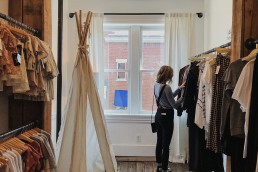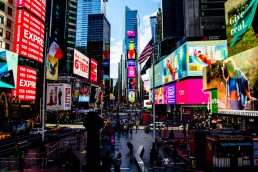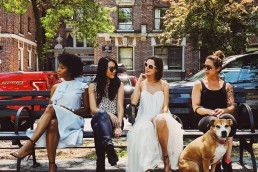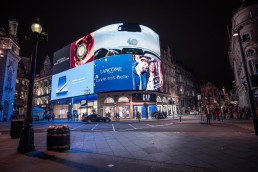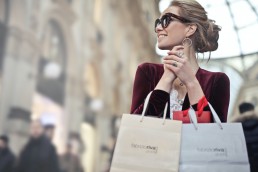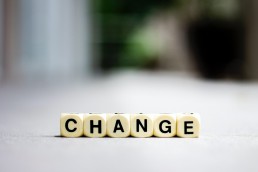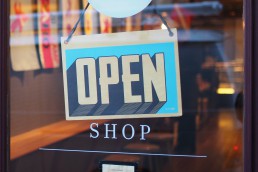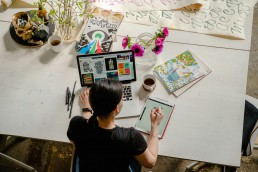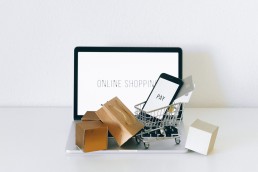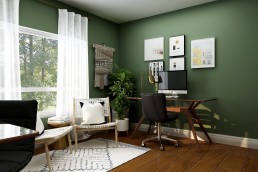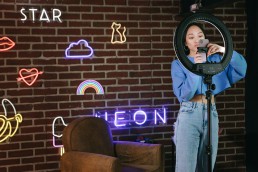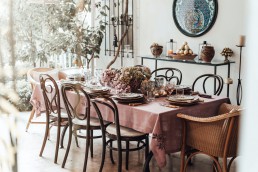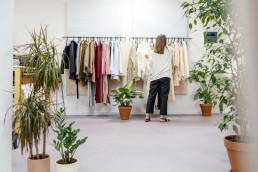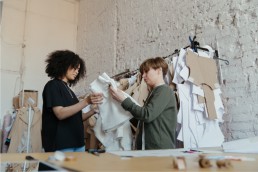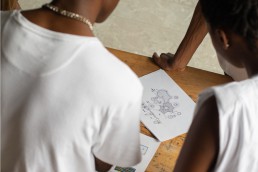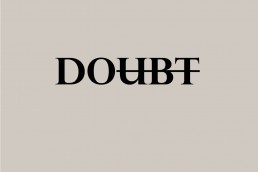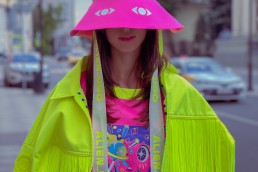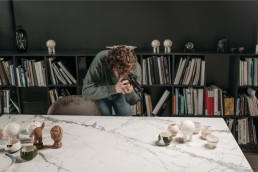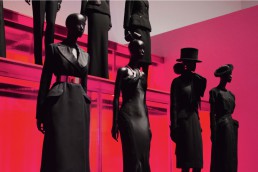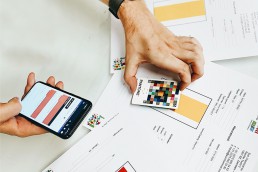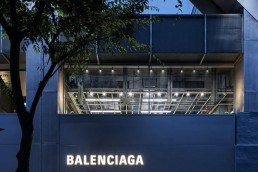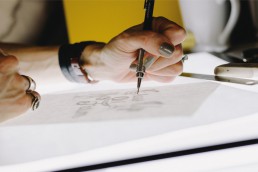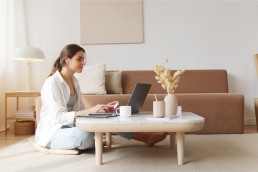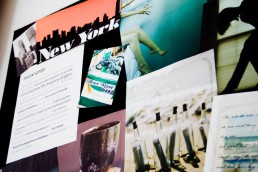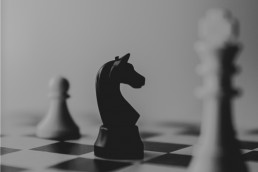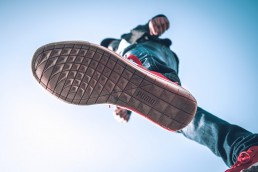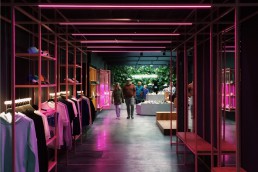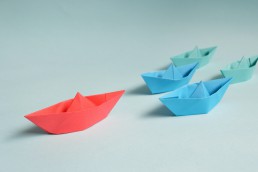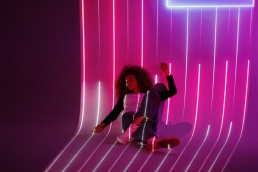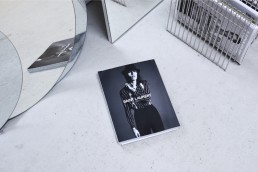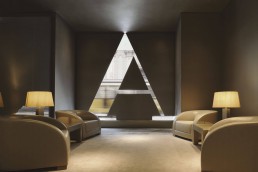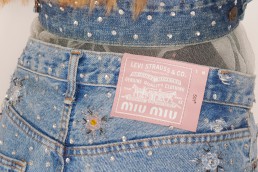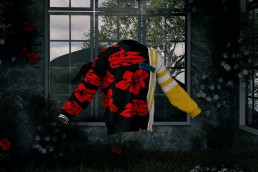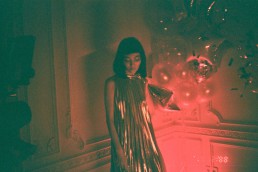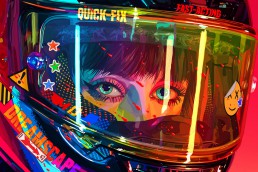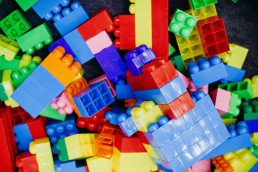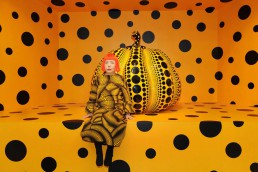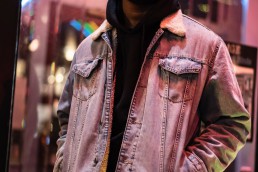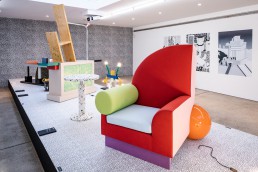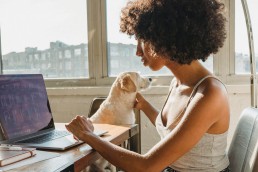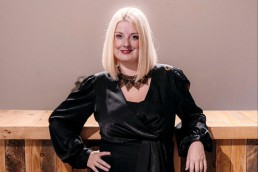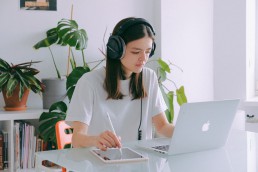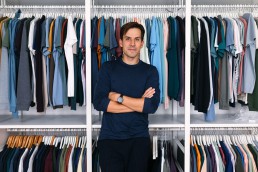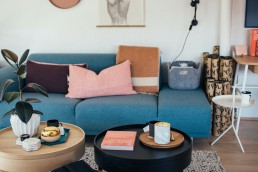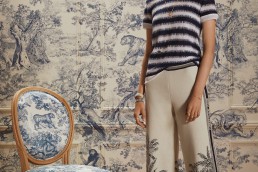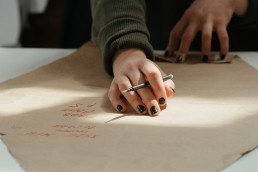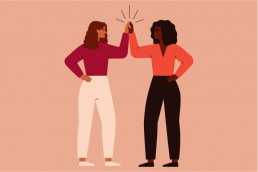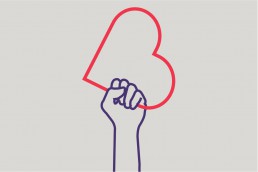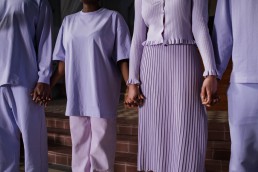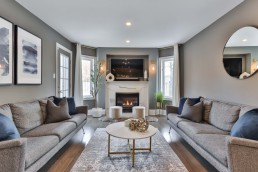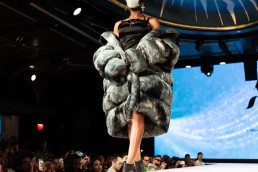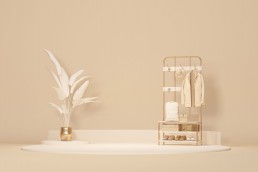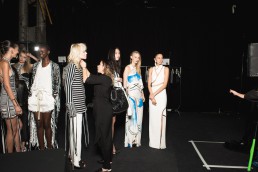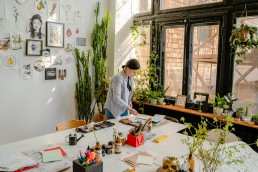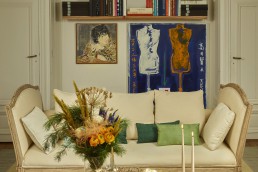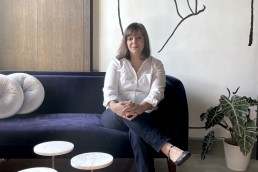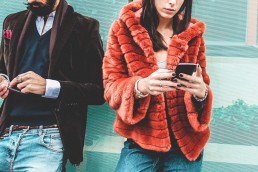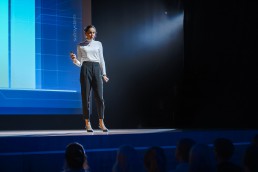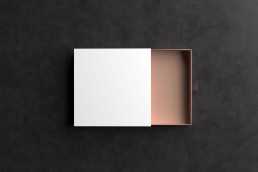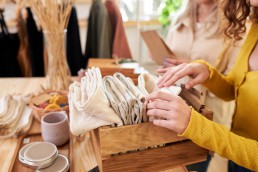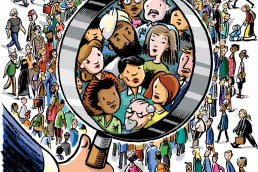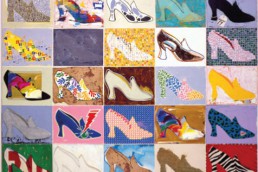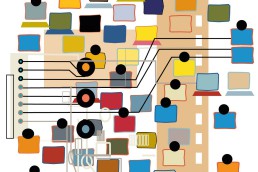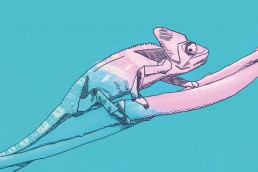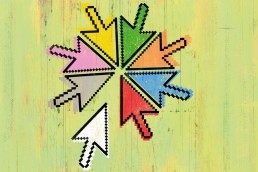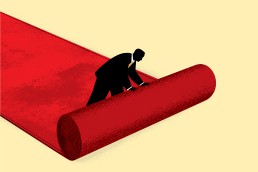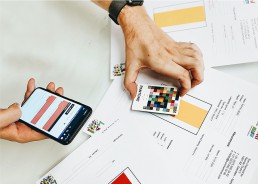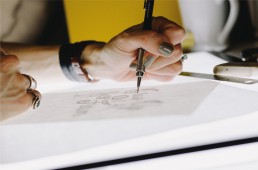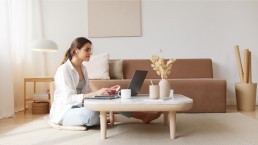Fashion Material Revolution: From Biodesign to Innovative Sustainable Materials
Innovation within the fashion system has gone through several stages; from digitalization, to fashion conceived as a service, and perhaps the slowest but the most revolutionary, the creation of materials produced in laboratories known as biofabrication. Today we share some insight into a new industrial paradigm for goods produced in the 21st Century.
The rise of sustainability has prompted many fashion brands to take action to create innovation centers internally or through external collaboration. Thanks to innovation and R&D, new futures for creating, scaling, and distributing amazing, technically engineered materials are possible.
One of the main problems facing the research and development of biodesign materials is the time required to produce a patented outcome that can be mass-produced. Many innovation projects developing materials are in an experimental phase and do not always find the support of manufacturing companies or investors to keep the research going.
Associating fashion with biological techniques and the possibility of experimenting through unusual materials and processes is not entirely new, although, in the past, the focus was on performance presentations and subversive art.
Designers such as Hussein Chalayan or Martin Margiela had experimented with the interaction of bacteria in fabrics, by burying them underground to decompose. Proof of this is "The Tangent Flows", Chalayan's first collection after leaving CSM, also the exhibition entitled Maison Martin Margiela's 9/4/1615, at Rotterdam's Museum Boijmans Van Beuningen in 1997.
Regardless of these artistic claims, the last decade has been crucial and revolutionary in projects that seek to push experimentation to the limit, taking into account factors such as commercial viability and scalable business models.
There is some confusion and misinformation regarding recycled fibers, regenerated fibers, biofabrics, and faux materials, since not every material has the same qualities. Just because some material has “organic” or “bio” in its description, does not mean that it is better than other technologies. Each technique and composition allude to a type of experimentation and unique technological development.
It is logical to think that a new type of innovative material would force many fashion brands into rethinking the production system and the process involved in developing a fashion collection.
What is Biodesign and How Biofabrication Technologies are Framing a New Industrial Revolution
The popularization of biofabrication has captured the attention of many designers around the world. Biodesign is "a design practice that intertwines biology and design, employing living organisms such as algae, bacteria, and fungi to synergistically develop materials and products".
Over the last decade, biodesign research projects and consolidated companies have accelerated the translation of ideas and experimental prototypes into consumer products.
Researchers D'Olivo and Karana in Materials Framing: A Case Study of Biodesign Companies' Web Communications identified three main categories: material origins, fabrication process, material outcomes, as means to operationalize materials framing thinking in biodesign. They analyzed how biodesign companies communicate and currently frame new materials generated from living organisms, and their variations depending on their nature.
"By improving knowledge and skills for introducing new materials to consumer markets, biodesign companies will evolve their ability to shorten the uptake period of innovative materials from living organisms and cultivate widespread acceptance", the authors stated.
There are successful cases and biodesign companies that are changing the market landscape. For example, Mylo, made from mycelium —a mass of branching, thread-like hyphae from mushrooms. Mylo is soft, supple, and less harmful to the environment, a sustainable alternative to leather. The innovative material is made possible by the world-class scientists and engineers at Bolt Threads.
According to Lyst 2022 predictions, in the last three months interest in consumer goods containing the keyword "mushroom" has increased by 37%. From Hermès betting on eco-alternatives to Stella McCartney that dedicated her SS 22 collection to mushrooms, it seems biodesign is finally having a moment inside design studios. There are other biodesign companies worth knowing such as Orange Fiber, Mycotex, Ecovative Design, Algiknit, and Kapok, to mention a few.
The sustainable approach is here to stay and it is essential to keep innovation at its highest level to do less harm to nature and to keep the environmental impact of the fashion industry under control.
ELLE Education Editor(ELLE Business)
6 Types of Product Photography for Your Lifestyle Product
Social media exposure and e-commerce platforms have increased the demand for lifestyle photoshoots to showcase the product or the services we provide impeccably. Today we share some advice on how to produce eye-catching lifestyle images to break the internet.
Still-life photographs have become a daily task for any communication strategist who works intensively on social networks. In a world where the digitalization of reality is more present than ever, it is important to know the aspects to consider when creating the visual identity of a brand, a project, or a service.
To produce a photographic series that catches potential customers' attention, we need to plan everything in advance. Decide what types of photography we need to create and which will connect more directly with our audiences.
There is no limit to creativity when producing product photography. We can create universes where our customer feels projected, inform them about the benefits associated with the product, integrate them into the brand communication dialogue and provide them with sources of daily inspiration.
Below you can find the types of product photography we can create for a lifestyle brand and its production characteristics.
1. Find Your Angle, Create Different Points of View
Using different types of angles, customers can really see the product from all kinds of views. You can try to mix-and-match zenithal perspectives with zoom-over products characteristics. Using this technique, you shoot all sides and details around the product. You can photograph these types of images inside a photo studio, or you can do it outdoors to get a natural look.
2. Cast a Model to Project Your Desired Brand Image
Professional models can bring certain attitudes and professionality to a brand's image. Brief your models so they can develop the look and feel you want to communicate to your audience. You can register different phases of photoshoot sessions; for example, you can create a behind-the-scenes story with hair and make-up on the go, capture their authentic expression and wardrobe changes. You can use the final photos for an advertising campaign, a social media post, or the website headers.
3. Still-Life: Inspiration for Everyone Using Everything at Hand
Photographic still-life has been around fashion and decoration magazines since its foundation. It is a glamorous and sophisticated way to portrait the products we want to promote. Great photographers such as Irving Penn and Horst P. Horst created unique creative universes as inspiration. The key of a clean and powerful still life photoshoot is to craft the perfect light, analyze and try different types of composition and balance of the objects. You can photograph the product using props or human parts such as hands, lips, wrists, or legs. You can use the collage technique and test unusual materials as a background to deliver intensity to the photoshoot.
4. Use Scale and Proportion on Your Products and Decorate Environments
Clients sometimes look for dimensions and exact measures of the products you are featuring in your communication channels. As a brand, you can provide scale images on a real background, do it so your customer can realize the proportion of the product in a more efficient way. In decoration, when photographing chairs, couches, bed textiles, tables, or lamps, it is crucial to find the right angle to feature the complete scene and create an atmosphere.
5. Dynamize Your Photos: Show Some Actions and Emotions
Emotions are the most powerful shopping driver. If we shoot and deliver a strong emotion to the camera, the client will immediately connect with that type of human experience. Depending on the product you are selling, sometimes your audience will want more dynamic pictures to feel connected, especially when it comes to sport and fitness brands.
6. Create Sequences, Textures, and Color Stories
The use of textures and the right color palette on a lifestyle product photoshoot is a basic notion that you must apply rigorously. Color psychology can help us to decide which are the best color combinations to be in the shoot. You can also create a textured story to showcase an extreme detail of the product and deliver it into sequences.
A picture is worth more than a thousand words, be prepared to create the best photoshoots to dazzle your customer. Stay creative and be ready to deliver the best energy inside your lifestyle product photoshoot.
Fernando Aguileta de la Garza(ELLE Business)
How to Conduct a Market Research for Your Business Idea
Listening to what the customer wants is mandatory in any lifestyle business marketing plan. Great ideas and data can merge, offering tactical strategies to succeed. Today we share some tips to conduct effective market research for your brand.
Many lifestyle business owners and fashion designers develop original ideas. However, they get frustrated because when they put the offering out into the market, they discover it was not precisely what the client really wanted.
You may have a lot of ideas about fashion or style, but you must pay attention to what people are looking for, either in a mass or a niche sector to deliver your brand purpose.
Fashion marketing helps you in the cornerstones of your business. It is a process that can help you to focus on your unique value proposition, refine your desired target customer and cover its needs, developing an outstanding product or service for them.
One of the first steps to do it right is to always prepare and execute exhaustive market research. You may have an idea of the product in mind; however, you should never get too excited to prototype until you find data and the motivations from your customers.
Market research according to the Ansoff matrix, can help you to upgrade existing products and develop new products. The market research clarifies and structures all business areas, plus the marketing mix. The matrix also shows evidence of unmet needs from a customer, the possibility to find new markets and territories for developing products or services, and measure customer satisfaction to maintain a competitive edge inside that market segment.
The American Marketing Association considers marketing research as the function that links the consumer to the marketer through information used to identify and define marketing opportunities, implementing the data results into the benefit of our business.
According to the European Society for Opinion and Marketing Research (ESOMAR), the systematic gathering and interpretation of information about individuals or organizations using statistical and analytical methods, as well as techniques of the applied social sciences to gain insight are what constitutes the foundations and practice of market research. This is an essential part of any business or product development plan.
Common Types of Market Research to Develop Your Business Idea
Global Market Data & Competitors Benchmarking
You will have to dig into everything related to your market's idea. You can find a lot of research for consumer insights online for free, in the news, or in media specialized in consumer trends. You will have to become an expert on that type of market and know the answer to these questions. What are the top brands? What are the most searched products online? Who is your biggest competition? Who is leading the market? Who is being the most innovative player? To name a few.
You can build a map of competitor brands and register everything about them in a comparative matrix. Every fact is crucial, from distribution channels to product development, communication efforts, you must trace everything. This benchmarking will help you to detect successful practices and avoid the worst.
If you need a piece of specific information about market share, growth estimations, and insights on consumer shifts, you will probably need to buy articles and intelligence reports provided by a market research consultancy. Information is power; this is the case when you should invest in it.
Surveys & Interviews: Clients Know Best
Either before, during, or after a product launching, it is strategic to hear out the client's perspective about it. If we are developing a business idea, a survey directed to our ideal target will give us an advantageous position to gain relevant information on usability, satisfaction, or other aspects you may not even be aware of.
The survey can be created using the qualitative perspective (to let the client speak about the issue freely) and the quantitative perspective (to convert insight into structured data we can analyze). You can create online questionnaires or send them via email, both ways are effective as they are proved to be the most commonly used techniques to receive feedback from the client. You can build open questions, ranges, and scales to discover what your client needs and wants.
You can always do a one-to-one interview session; you will gain deeper insight and read body language. The in-depth interviews, however, are harder to codify and you will have to build empathy first so that the answers are authentic.
Observation: Be There but Do Not Interfere
To observe your client interacting with your prototype or final product perhaps is the most sincere and accurate way of seeing the truth of its performance with your eyes. Take as many notes as you can. You can track the time of interaction, observe body language, and facial expressions. Any single detail may lead us to a piece of useful information.
If you already have a store, the task gets easier. Go as a mystery shopper and start observing all your clients in one place; write down their reactions to inputs you might prepare ahead, such as window displays, retail expositors, product walls, and point-of-purchase communication materials.
Whether you are developing a business idea, upgrading a prototype, testing service, or improving an existing product, you should hear what your clients have to say first. Their insight is extremely valuable to get it right with all data available at your hand.
ELLE Education Editor(ELLE Business)
Fashion Museums: How Culture Works as a Brand Positioning Strategy
Culture, inside any society, is a definite asset for luxury and fashion to flourish. Today we explain why brands are leaning on it to build a strong identity.
Fashion's dynamic is more than just making fancy clothes. Fashion is a cultural expression of the current era that exposes the values a society encourages, and at the same time, ennobles what is ephemerally appreciated.
Culture, on the other hand, is meant to last. The customary beliefs, arts, and social forms of a particular group define its identity and what intends to transcend as a collective force.
Some of the most notable fashion brands worldwide use culture (including art, architecture, or music) to create an extended universe that does not end within the product.
Culture is one of the most effective tools for transmitting meaning and building a community’s identity. Under this perspective, brands are nourished by culture, building symbolic systems of representation and identity, defining their codes, and drawing their boundaries of belonging but also differentiation.
The culture inside a company is built based on norms, values, precepts, and common objectives. The storytelling of a brand also uses cultural references, historical myths, legends, and narratives (true or false) to transcend the ephemeral nature of fashion.
"Fashion dies young. That is what makes its lightness so serious", said Jean Cocteau; regardless, all the cultural aspects attributed to fashion give it a perennial pass to divest itself of its immediacy. Thus, it acquires its place in the Olympus of conservation and the exhibition as a revered object of cultural interest.
This association between brand and culture is an optimal positioning core to communicate ideas and concepts that transcend the logic of fashion. This bond creates an authentic, more stable brand culture -without the ups and downs of trends-, and which serves as a cohesive element between commerce, artistic discourses, design, and society.
Branded Fashion Museum: At the Intersection of the Brand Heritage and the Global Fashion Consumerism
Today, a variety of museums collect dress and textiles, from anthropological and ethnological museums, history museums, art museums, design museums, and specialized fashion and textile museums.
The creation of museums dedicated to fashion is, in part, what has helped people to understand fashion at large and understand the act of dressing up from a different perspective.
Alexander McQueen: Savage Beauty was the first blockbuster exposition that broke all conceived rules about curating fashion. It was not the first of its kind (remember what editor-in-chief Diana Vreeland did on New York's MET in the 1970s) but, it was indeed the first one that sparked a fascination about fashion among the general public.
The established museums, and private fashion collections, have also served as a prestigious claim for international fashion capitals. In Manhattan, The Museum at FIT, the only one in the city that specialized in fashion; or in Paris, the Galliera Museum, also known as the Musee de la Mode de la Ville de Paris, and The Louvre Mode.
Fashion brands promote artistic exchanges with art and culture to strengthen their imagery, reaffirm their position in the leadership of luxury and, through cultural activities, be participants in the global conversation.
The brand-related fashion museum is the ultimate expression from the above, as many luxury brands have created singular spaces to show their cultural relevance and product heritage; a mix of commerce, mediatic exposure, philanthropy, and brand awareness (in-and-out digital platforms).
The Fondation Pierre Bergé- Yves Saint Laurent in Paris and Marrakech; Gucci Garden in Florence; the Fendi HQ- Museo della Civiltà Romana in Rome; The Fondation Louis Vuitton in Paris; The Fondazione Prada and Armani Silos in Milan, or Fundación Loewe in Madrid, they are an example of how patronage of a brand functions as a corporate communication tool.
In this way it contributes to shielding the brand's reputation, associating it to a combination of cultural themes, from architecture to contemporary art, encouraging independent cinema, literature, plastic arts, video art, and a whole new range of musical expressions.
Fashion companies have taken a more extensive role around the worldwide business. It is the time to give back to society somehow. This should not just be a strategy, as it is a social duty to contribute to the global development of culture, to protect, promote and respect it for future generations.
ELLE Editor(ELLE Business)
How to to Decide the Color Scheme for a Decoration Project
The sense of color is present in our everyday life, boosting our emotions and memories in the spaces we live in. Today we share some tips on how to decide the perfect color palette for any decoration project.
Many Interior Designers and Decorators ask themselves continuously how to choose the right colors for a client's project. A lot of variables take place when we design interior spaces and decorate them, as the main goal is to build an atmosphere that surprises your client.
A color palette or a color scheme is a selection of colors that combine perfectly together. This mix can be constructed by color similarity or by the opposition between the colors to create an emotional expression, a dynamic frame, and a visually harmonic design structure.
Understanding the color wheel and its twelve colors is the first step for pairing your infinite color options to decorate. Whether it is the walls of a home, the combination of colors of furniture and textiles, the goal is to find a balance between sophistication and functionality.
Color is a fundamental element for human beings. We observe the world through tones and sensations, as colors possess a range of symbolism in our culture.
One of the first studies dedicated to the subject was written by the German poet, artist and politician, Johann Wolfgang von Goethe in 1810 entitled Theory of Colors. In his work, Goethe argued that color can be studied from different perspectives, such as physical and functional. His most important contribution is a theory about the emotional qualities and attributes of colors and how each color can affect people's moods.
For this reason, Goethe's thoughts had become a primary reference in many professional fields such as art, decoration, and graphic design. Goethe said "light and darkness, brightness and obscurity, or if a more general expression is preferred, light and its absence, one necessary to the production of color . . . color itself is a degree of darkness".
Practical Ways to Decide a Color Palette: It Is All About Combination
One of the simplest techniques for selecting a chromatic range is to play with the endless possibilities of the color wheel. For example, you can use a monochromatic palette to highlight a single color and its different shades and shadows.
You also can mix the selected color with white, black, and gray variants to obtain a wider palette of tones without losing the minimalist focus that the monochrome range offers.
The main idea behind the versatility of the color wheel combinations is that you can opt for complementary, analogous, triadic, or neutral color palettes. If your project demands color contrasts, it is recommended to play with opposites. If you use close-related colors, the outcome will be a greater sense of unity, but you will bring some dynamism too.
When you use triadic combinations, the color wheel will be divided in a triangle format. Blue, red and yellow, or violet, green, and orange. You must take care of the tone and saturation of your desired selection to control the visual load of color inside the project and its application in deco elements such as rugs, floors, or frames. When we misuse color, it can turn out to be a visual struggle not very pleasing to the eye.
Neutral colors are very fashionable right now. Combining achromatic tones with near neutrals you can achieve a soft and non-aggressive look. Neutral tones can help us to highlight key elements of our project, such as eye-catching furniture, and sculptures.
To make your work look more professional, you can find online many sites that will help you in the task of creating harmonious color palettes, based on your decorating goals and the vibe you want to project in certain areas. Decorating a living room, where activity and frequent meetings are expected, is not the same as designing an office or a reading lounge.
Coolors and Canva are very user-friendly online tools to work with. Its software will help you to create precise color palettes. If you want to, the app will suggest automatically generated combinations, or you can create them manually and start a color palette based on a fixed shade or color.
You can save your color library and use it whenever it is convenient. You also can use inspiration photos to extract their color palette to explore unexpected combinations.
The color scheme for any project defines the attitude and the desired atmosphere that we seek to convey thanks to the strength of colors. When you carry out a decorative project, remember the technique, however, you should be guided by your intuition and taste as a decorator.
ELLE Editor(ELLE Business)
Fashion Collabs: Are They Still Relevant for Brand Awareness?
The nature of fashion collaborations has radically evolved in the last twenty years. Purely, its essence is still intact: create a dialogue with the present times with the best possible partner. Under uncertainty, are we better together than alone?
Everybody who is anybody has done a fashion collaboration. That is a fact and a mantra inside the fashion industry. No matter the market segment or the size of the company, everybody is now allowed to collaborate.
That spirit of joint work was not very common decades ago due to politics of secrecy, competitiveness, and design as a valuable asset that was not supposed to be shared.
In today's market, "no man is an island", globalization and technology continually work under a convoluted roadmap, where the cooperation of fashion players is mandatory to survive.
In 1999, Target broke the mold along with the Architect Michael Graves introducing its first designer line of products. Isaac Mizrahi, Philippe Starck, Proenza Schouler, and Rodarte are part of the group of designers that have collaborated with the mass-market store over the years.
Marc Jacobs introduced the global contemporary art scene in 2001 at Louis Vuitton (a century-old luggage luxury brand that once was the temple of the aristocratic traveler), thanks to Stephen Sprouse's collection that featured a classic monogram canvas revamped with graffiti.
"Art and fashion were not strangers (think of Elsa Schiaparelli's relationship with Surrealism) still, its renewed encounter under new century business rules changed how luxury was perceived globally and how it could interact outside of its Parthenon."
Swedish giant H&M went further, establishing an unseen dynamic between a retailer chain and a high fashion brand. It all started with Karl Lagerfeld's collection back in 2004 that became an international formula to success. Designer clothing at affordable prices was here to stay as the customers went crazy about it and demanded more.
Today's landscape is utterly different. The collaboration arena has merged into a crowded marketplace where everybody wants attention and immediate financial results. From the music industry to entertainment, passing by the internet stars and the heritage fashion houses; all of them open to collaborating, joining efforts to double sales or gain public recognition.
This unalike cocktail of ingredients is making the collaboration field either a gold mine or a battlefield. Like never before brands have been sharing their ideas, mixing their processes and combining the DNA of the brands, finding new results to drive innovation.
You Collab, They Collab, Everybody Collab: How Did We End up Here?
According to Frans Johansson, author of The Medici Effect: Breakthrough Insights at the Intersection of Ideas, Concepts & Cultures, innovation evolves across disciplines and disparate industries. The intersection, "as the point as the point where established concepts meet, connect, clash, and combine, where remarkable innovations are created and new, groundbreaking ideas emerge".
A fashion collaboration is about a dialogue between the brands, their legacies, and the core values that define them. An unknown territory where everything can be possible and the outcome should reflect the syncretism of this experimental approach. The Medici's analogy could serve as the template for a "cross-fertilization of ideas" approach to collaborations. Just like the Florentine banking family did in the fifteenth century, breaking conventions and mixing disciplines and cultures to start the Renaissance period.
Creating a fashion collaboration to gain brand awareness remains relevant as a corporate strategy. The action may get media coverage leading to call-to-action purchases. In addition, other goals can be achieved, such as introducing the brand to a new demographic, rejuvenating the brand image, or changing the brand’s positioning.
Today, some of the fashion collaborations do not follow the classic playbook. As the strategy has entered the mainstream, brands must keep up surprising and plan their most unexpected move.
Fendi X Skims collaboration is the latest example of two brands seemingly at the opposite end of design. Shapewear and a revered roman house specialized in fur and high fashion, seemingly opposites attract. Kim Jones, Fendi's Artistic Director, was a pioneer in the collaboration trend due to his partnership with the athletic brand Umbro back in 2002.
Exclusive and massive segments united, a luxury house in partnership with a streetwear brand, celebrity pop star meets high-end retailer, technology company loves analog artisanal luxury brand; all of them are fascinating examples of today's unprecedented collaborations.
The sports and 3D reality videogames are infatuated with luxury sports brands and heritage Maisons. The latest collaboration of Fornite X Moncler and Xbox X Gucci both are obvious proof. Tiffany X Supreme, Telfar X Uggs, and the "Gucciaga" hackering experiment between Gucci and Balenciaga (now in stores) are the ultimate warming up for the holiday season.
When consumers are witnessing the launch of a brand collaboration almost every month, wouldn't it be reasonable to talk about the quality and intent behind each novelty attempt? Are those collaborations bringing something valuable in terms of design? Are they environmentally conscious within their processes? Are they being truly creative? Are they more of the same?
These are tough but legitimate questions that soon the fashion industry will have to address if the collaboration purpose, which fosters innovation and creativity, is honestly beyond profit.
Fernando Aguileta de la Garza(ELLE Business)
5 Marketing Strategies to Promote Your Interior Design Studio
Do you want to promote your interior design and decoration studio? Today we share digital tools and strategies you can use to start and market yourself wisely.
Interior Design and Decoration professionals constantly communicate their projects and ideas to reach a customer base. Many of them have worked before in a consolidated studio to gain experience.
If this is your case, you already know how it works. However, flying solo is not like working under big wings.
Below you will find five strategies to strengthen your communication efforts and marketing tactics if you have launched your own design studio, and want your client portfolio to grow.
Create a Visually Stunning Website to Promote your Brand
Many interior designers and decorators are well-known inside a small social circle. New consulting and new projects come by past client recommendations and word-of-mouth. This is extremely valuable for building a client's portfolio as people will contact you directly referred by a friend of a friend.
However, not all cases are identical. This is the reason why you should build an online presence for potential customers to know about you and your work, locate you, and finally contact you for a possible decoration project.
The first thing you have to do is create an attractive website that communicates your specialty as an interior designer or decorator. Your potential client must identify the type of projects you do and your trademark style through web images and your content. .
When it comes to positioning your studio, you must define your niche market, specializing in home decoration is not the same as specializing in commercial space development for example. Once you define your target, build your own vocabulary to write your business’ web descriptions..
In the contact section, it is mandatory to never have a free email domain. Paying for a personalized email will project professionalism onto your brand to generate trust when someone emails you.
For the web's visual design art, produce images that represent you as a studio. They could be past projects, a personalized composition of graphics, collages, or any other visual attribute that sets your brand apart from competitors. Branding and aesthetics matter.
Design All Your Social Media Accounts as a Business Landing Page
Social selling is rising up. To get on the right track you should use all social networks at your disposal.
Choose the name of your brand studio and subscribe on all social media, from Facebook, Instagram, YouTube, Twitter, to TikTok. You do not need to use all the accounts to draw up your communication strategy, however, you can protect your username, in case you might use the platform in the future. As a strategy, provide all contact information in the social media profiles, webpage, email, studio address, and telephone. This way, even if you are not active on that particular social media app, if a client reaches for you, they will immediately know how to contact you.
For example, Instagram can serve as a portfolio for your projects and an adaptation of your website. That content can generate client leads and spread your reputation as a design professional. Use social media as a business card and for what suits you best.
Share Your Projects in a Digital Layout
Digital presentations are a powerful tool for junior designers and decorators, as image in this field is everything. Create and share with your digital community 3D renders of your projects. High-resolution mockups work as magnets to attract people interested in design and decoration, as people crave the final outcome. In a commercial strategy, hyper-realistic 3D photos will help your clients to see the project accurately and visually more attractive.
Home staging photos are a type of communication tool that will amplify your brand's aesthetics to reach potential customers either through your Instagram profile or through your Facebook community.
Write a Newsletter and Share Reviews
An accurate review is one of the reasons customers in the digital age trust brands or services. Create a space on your website dedicated to customer testimonials where they can share the experience of having used your services.
Another marketing and communication touchpoint to reach clients is email. For example, you can launch a deco-newsletter providing knowledge about interior design, textures, color trends, and how to solve space problems, to mention some topics. Content newsletters are gaining over the commercial ones. Build your email database and select relevant topics for your audience, such as recommendations, decorating tips, tutorials, or DIY advice.
Become a Source for Inspiration
Every decorator and interior designer has a creative universe of their own. Interests, inspirations, references are just a few examples. Share this information with your followers; show them where to find inspiration and the decorative references, furniture creators, architects, or people from the art world you are passionate about. This imagery around you will reinforce your positioning as a studio manager creating emotional ties with your potential customers.
Promoting your decoration and interior design studio is an everyday job. Try different strategies until you find what is best for you and your team.
Fernando Aguileta de la Garza(ELLE Business)
Lifestyle Brands: What Are They Doing to Succeed?
Lifestyle businesses have become a source of inspiration, leading in storytelling, eye-catching product offerings, and worldwide followers. What is the key to their success?
Lifestyle brands are now part of our daily life. We recognize them, value them, discuss their actions and their failures. No brand can escape this relationship with its customers, as every brand has a unique story to tell.
Contemporary branding strategies aim to connect with different audiences through precise communication campaigns, transparent production sources, and building trust by standing up for their values.
Lifestyle brands want to evoke memories and create emotional connections with their target, "they need to have a unique identity, and most importantly lifestyle brands are increasingly becoming one of the key components of consumer's self-expression" according to author Schmitt in The Consumer Psychology of Brands in Journal of Consumer Psychology.
Brand image is also a relevant factor in lifestyle ventures. It does reflect a specific aesthetic besides any brand associations, loyalty, awareness, or brand equity. Knowing how to build a strong brand personality (link to our article)- which we’ve written about before- enables consumers to correlate their personality with the brand's personality, as many people need a sense of shared identity.
This correlation is possible due to target demographic characteristics, the personality traits of the customer, and the willingness to express or showcase their image or identity through the brand’s promise and emotional connection.
"Lifestyles are characterized by a unique style of living that is based on a wide range of activities, interests, and opinions" according to marketing author Plummer in The Concept and Application of Lifestyle Segmentation, Journal of Marketing.
"Lifestyle" is related to psychology since it has to do with the daily activities of persons. In a marketing and branding context, "lifestyle" suggests a close relationship between people, behavior, and consumption.
To build a successful lifestyle brand, we must make sure we can meet certain criteria essential to achieving that previously mentioned emotional connection. Lifestyle brand managers are very aware of them, below you can find some of the relevant aspects you must meet to build a lifestyle brand.
1.You Must Have a Strong Conceptual Universe
Lifestyle brands have stories, references, and a solid foundation to explain their inner world. Having a strong conceptual universe will allow your brand to tell its customers where you came from and what you care about it. For example, fashion brand Jacquemus, created by fashion designer Simon Porte Jacquemus, appeals to a younger customer with a carefree attitude and a connection with nature. His brand references the south of France, Marseille and Provence, the countryside, the family, the sea, and innocent memories of love. You will need to create a particular universe for your brand to draw inspiration from it.
2.You Must Build Principles and Stand By Your Values
Branding is all about values and purpose. You need to define what you stand for and make it the core of your value proposition. Principles and conduct norms are essential to connect with customers, as they want to feel proud of the brands they buy beyond consumerism, for this very reason, it is important to be honest when selecting your brand’s values; customers can distinguish deceitful brands at large. Sports brands are the leaders in lifestyle, exercise, competition, and overcoming goals are concepts part of their basic DNA. For example, Nike stands by individuality and fair game.
Other examples outside of the world of sports include,Ikea with its values of good design at affordable prices to boost your creativity, or Parley, which stands for actions to fight climate change and saving the oceans.
3. You Must Create a Sense of a Community
The most important asset for a lifestyle brand is its community. A brand without a loyal customer base cannot make an impact in their lives. To build a store you are offering and the target market. You should be aware of their hobbies, interests and what they can expect from you.
For example, Goop, Gwyneth Paltrow's former newsletter and now a lifestyle website, offers its readers well-edited information about fashion, wellness, nutrition, and travel in a close and relaxed way. Goop gives its audience topics they want to read, reinforcing their trust and giving them a sense of belonging.
4. You Must Be Physically Present, Digitally Available
Lifestyle brands must be where the action is. Either on the sales floor or the client's smartphone, brands must be flexible and know how to adapt to the never-ending market changes. A retail location is a great option to build your brand's essence through displays, windows, and personalized service. This way, your customer can experience the brand.
For example, the Parisian lifestyle brand Sézane pioneered the mix of physical and digital worlds. Its purpose "Je ne sais quoi for all" has become a mantra for offering an exceptional "Rendez-vous" service in all its "Appartements & Conciergeries" and, at the same time, delivering great content and user experience through e-commerce. Lifestyle brands must be digitally active to strengthen their relationship with the consumer.
Successful lifestyle brands, such as Ralph Lauren, The Row, or Anthropologie, are continuously innovating, yet faithful to their core principles. You can get some inspiration from their actions, this way you can develop and create your lifestyle brand, as long as authenticity and originality are present inside your strategy.
Fernando Aguileta de la Garza(ELLE Business)
5 Key Elements to Create an Inspiring Mood Board for a Design Presentation
Mood boards are an essential visual tool for any design and fashion project. It keeps the inspiration in place and serves as a project guide for all design teams. Today we share some tips about how to create the perfect mood board.
If you are willing to start a design project, you probably wonder how to express all your thoughts about it to the outside world. Mood boards are a classic design tool to show all the inspiration layers a design project requires.
Mood boards are intended to have an eye-catching design, be visually comprehensible and easily express design specifics. You can create mood boards from different perspectives and use diverse elements to reflect your ideas.
In project presentations, for fashion design, interior design, or lifestyle project assignments, it is practical to create engaging layouts to express and detail the main concept behind the collection or decoration project.
These are the key mood board elements you must include in your design presentation:
1. Develop a Creative Concept Beyond Aesthetics
Creating a mood board has to be a stimulating creative outlet. Try to find the right concept for your brand, fashion collection, or interior design project, it goes beyond collecting nice pictures and mashing them up together without a proper cohesive narrative explanation. A creative concept is not a theme, like flowers, sea, forest, instead, a concept is the union of creative elements from different sources, harmonized and edited to a weightier conceptual argument and aesthetic depth as a final result.
A creative concept can include cultural aspects, sports, cinema, philosophy, or music references, all integrated together; when the concept is ready, now we can work in specifics.
2. Select a Consistent Color Palette That Represents Your Project
Colors are an essential part of any design project. They set the tone and assign a certain "vibe" to the mood board. Colors can guide the inspirational images (we will comment on this later on) or vice versa. You can adjust and change the colors when developing the mood board; they can progress until the final layout.
3. Choose a Typography Series for Every Written Piece
The typography we select will communicate a tone; the choice will be present on every graphic, logo, and text element required. Font types are perceived differently from one typographic family to another; you need to balance intensity, clarity, and font aesthetic to make the best choice. Serif, Sans Serif, Script, Calligraphic, Display, are all examples of font types at your disposal, you should select the same font family to do combinations and experiment during the design process.
Integrate graphic icons matching the selected typography. This way, the graphics and font design will be harmonic and true to the original concept.
4. Create Textures and Prints According to Your Color Palette
Mood boards can be filled with textures, finished prints, and raw materials that uplift the final result. They are used to give depth and variety to a design presentation. Color blocks are great, but prints always inject dynamism and freshness into a project.
5. Tell a Visual Story With Inspiration Imagery
As if it were a movie, on a mood board you need to create a visual narrative. The image research will help you tell "the story" behind your project. Using inspiration imagery, you will bring emotions inside the mood board presentation. Evocative pictures are effective to portrait your general idea, then use detailed images to zoom in and describe the sensations. If you are developing a mood board for a pitch meeting, try to create video stills with those images, add some music and concise titles. These tools will help you showcase your story in the best way possible.
Working on a mood boards project is challenging and enjoyable at the same time. Pair your mood board layouts amongst a clear speech to explain to your audience the creative concept. A mood board is a flexible, highly-creative tool for you to communicate ideas and outline all aspects of your project. Do not be afraid to break the rules.
Fernando Aguileta de la Garza(ELLE Business)
3 Ways to Blend Tools for Creativity and Brand Management
Making smart business decisions requires skilled managers capable of unleashing the creative potential of employees and balancing strategic thinking. Today we share some tips to link creativity and business principles.
CEOs, managers, and office leaders take daily business decisions to make sure that their organization is performing successfully. This complex and challenging market requires a different business thinking approach to lead from an organized and systematic decision-making process, including the analytical and feel approaches.
Thorough information is required in order to have a clear business scope, as many variables can affect our judgment to make business decisions, they must be based on analysis and interpretation and not only on a hunch.
A definition of management is "the organization and coordination of the activities of an enterprise in accordance with certain policies and in the achievement of defined objectives, that is, the process of being managed or managing". To be a manager is not about having a high-rank position in an organization but about leading, caring, and motivating a team.
Being a leader, and not just a boss, is a crucial aspect of modern management, as it is part of the job to fosterg the of the employees' confidence. At the same time, visionary managers must update their cognitive skills and learn to cope with the practical side of the business, constantly practicing and refining their approach to succeed.
Below you will find three aspects of management that require creativity, personal skills, and new thinking in organizational mindsets.
Management in Action: Increasing Efficiency and Developing Leadership
Fayol states that classic management perspective encourages managers to think and act rationally following five main principles such as planning, organizing, leading, controlling, and achieving. To become both effective and efficient they first need to acquire conceptual skills, meaning to observe and act in a situation from complex analysis and evaluation.
Second on the list are interpersonal skills, meaning the ability to relate with people. Third, technical skills, meaning to learn the technical aspects of the job, and fourthly, political skills, meaning the capability of building professional networks with other managers.
A skill set is necessary to manage yourself and be able to manage others. Sets may vary from case to case, but contextual awareness, creative thinking, and organizing are resourceful to identify all business environments and department dynamics. Creative problem solving is also important to develop autonomy inside teams, schedule tasks to establish priorities, and delegate activities to the best team members.
Rethinking Creativity: Creating a Problem-Solving Toolbox
Creativity in a business context must be taken at a personal level because it is the only way to express it, increase its potential and establish it as a culture inside an organization. According to authors Banks and Dundon, creativity is "the generation of new ideas by approaching problems or existing practices in innovative or imaginative ways." If we want to make creative thinking a tool inside the company, we must be open to re-examine assumptions and re-interpret facts to make our creative process a competitive advantage.
We can develop a creative problem-solving (CPS) toolbox that suits our tasks and challenges inside the organization. It has three functional stages; one, problem evaluation; two, idea generation; three, implementation. In sequential stages, we must start with a clear statement of the problem, then generate as many ideas that we can to solve the problem.
Be cautioned not to choose an immediate answer. These brainstorming ideas can take the form of post-it notes, mind maps, or clustering areas. In the final stage, codify your best solutions, analyze the advantages and disadvantages and make a final choice.
Overcome the Obstacles to Individual Business Creativity
Workshops and small group sessions are great tools to face the problems emerging in contemporary organizations, such as tiredness, anxiety, negativity, and fear of failure. The aim of these sessions is to foster an open culture and safe spaces to express what is triggering the work performance.
One of the most effective ways to increase self-confidence inside teams is challenging business mindsets. Some of these may turn out to be not entirely true, but may have been around inside the company for an extended period of time permanently damaging group morale. Questioning those notions through a CPS session and changing beliefs and attitudes inside business areas, will allow people to overcome creative blocks and express themselves freely, encouraging their potential.
Creative thinking tools and management stages can converge on a company daily basis. Managers must continue to learn constantly and increase their leadership to inspire others for a better future inside organizations.


